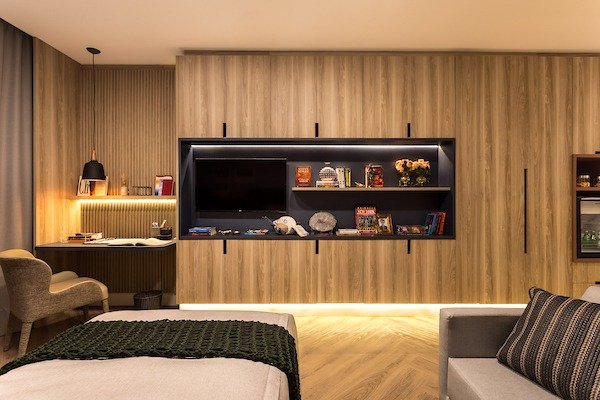You’re missing out by not being inclusive
In my career I have built a lot of home and commercial environments, but it wasn’t until I began studying gerontology that I embraced the often ignored intersection of age and design. Designing for the older populations today is designing for my tomorrow, and for each solution that I achieve, it gives me a greater sense of the opportunities for getting older in the future.
It came as no surprise that when I presented these concepts at the Studio for Longevity at CASACOR, the Brazilian interior design show, that I heard from from younger visitors that my designs didn't look like those for older people house, and the solutions that I proposed would be helpful to all people of all ages.
The comments from these visitors allowed me to understand that creating for the long-lived made me reflect on my own existence, as well as my own aging process. It brought me to two conclusions: ageism gets in the way of good design, and that great design that works for most people considers the needs of older people from the beginning.
Shifting Demographics, Shifting Markets
Brazil currently has 54 million people over fifty years old, representing about 25% of the population and; it will be 40% in 2045. Today, the income concentration of people over 71 is close to the group of people between 35 and 55 years old. Yet, business is just starting to discover the economic opportunity of this older population.
“Brazil currently has 54 million people over fifty years old, representing about 25% of the population; it will be 40% by 2045. ”
The last members of the baby boom are turning 60 and they are breaking free from the stereotypes of previous generations. This population has been transformed by the pandemic and they have become digitally literate. They are active and engaged and they want spaces that are designed with their needs in mind. They want better acoustics, good lighting, and furniture that considers changes to their flexibility, dexterity, and strength. They want improved retail and dining experiences, as well as evolved working environments.
Gone are the days where businesses could get by on functionality alone; meeting the minimum regulatory standard no longer cuts it. Today’s individuals want more style and design integrated into products and spaces that work for them. They want to be bold and they want to be part of society.
Designing for Older Populations
Once, when I asked an 83-year-old client what she couldn't miss in her house, she replied: an automatic keyless lock on the door, lights turning on automatically, and quiet music that would play upon arrive. Is this a specific solution for seniors? Yes. It meets her challenges with memory loss - she often misplaced her keys - but it also addresses her visual impairment and loneliness.
Another 84-year-old made an urgent request to modify her home, and it wasn’t for the typical grab bars in the shower that one would expect. Rather, she wanted improvements to her home office where she had working on her doctoral thesis throughout the pandemic. We invested in improving the lighting of the environment, as well as the comfort of the space with items like a high-quality ergonomic chair.
Age-Inclusive Design
Good design keeps older people engaged in ways that we could’ve never imagined just a generation ago, and this new generation is willing to pay for it too. A survey by Tsunami 60+ illustrated that nearly two-thirds of older people cannot find suitable products for their needs. Further, my company found that more than one out of three people would pay up to 20% more for a product of the same design, but with improved functionality.
The fear of getting old exists, but the fear of losing autonomy, independence and license is even greater. A 55-year-old woman, who also happens to be the CEO of a large company, came to me because she wanted her new apartment to be future proofed. She invested heavily on furniture and lighting that would help her maintain her independence. We were able to meet her requests with products that were inclusively designed with a modern and contemporary feel.
As populations age, and future generations get smaller and smaller, a solution to grow market share for any company is to engage older populations. This older demographic isn’t necessarily interested in products built for specifically for them. Rather, they would like their wants and needs to be included in design of mainstream products from the beginning.
Age-inclusive design is one very clear path towards profit.
Flavia Ranieri is an architect and founder of gero.pro, an information and inspiration subscription platform for professionals and businesses to design and serve better experiences on environments for the mature market.




